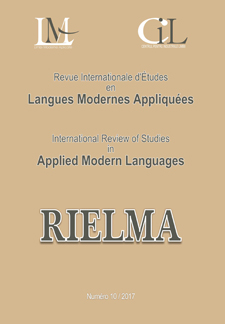
We kindly inform you that, as long as the subject affiliation of our 300.000+ articles is in progress, you might get unsufficient or no results on your third level or second level search. In this case, please broaden your search criteria.

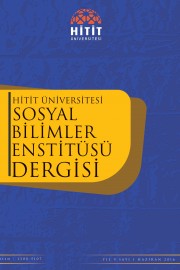
Although handcrafts, which were developed in order to meet the needs of humans since ancient times, have been one of the main activities for living, in our time it is generally adopted as a leisure time activity. Handworks are classified according to various criteria. The classification according to the use of raw materials including fiber, wood, stone, soil, metal, leather and animal remains, thin tree branches, stalks and wooden strips in handcrafts currently maintains its validity in our time. It is known that several handcrafts were used in Çorum province throughout the ancient times up to the present. Motives that are specific to the region were used for ornamenting these handcrafts. The motives that are used in handcrafts are a part of Turkish folk culture in which the feelings, thoughts and lives are reflected. The preservation of Turkish culture is of crucial importance for maintenance of regional cultural inheritance. The motives which are used in handcrafts are indicators of the Turkish culture and identity and they differ according to the regions where they have emerged and therefore they are referred with different names and details. It is due to these reasons that an inventory of the handcrafts and of the motives that are used in them should be prepared and that they should be inherited to future generations in order to assure their preservation. In this study, the handcraft works which were produced in Çorum Province of Turkey were classified according to their raw materials and the motives which were used in them were investigated. Thereby, a catalog which classify the motives that were unique to the region were developed.
More...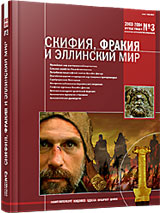
This paper aims to provide a solid argumentation to the thesis that M. Eliade developed a profound concept of man, which can be organically included in the modern thesaurus of philosophical anthropology. This is done based on M. Eliade’s writings and on his ideas and conceptual structures.The first argument sustained in the article is that the subject of research in philosophical anthropology and myth is the same – the man as a whole, in the entirety of structures, phenomena, main behavioral norms typical of his/ her surrounding. The second argument is firmly connected with the first one and follows from M. Eliade’s concept of myth. For him, a myth is a structure which is immanent to man, his consciousness, rather than a stage in development of consciousness. Thus, myth is regarded as a component of a human being, i.e. a structure that is built into a human being, and thus the two are regarded as mutually creating and complementing. When one bases on the analysis of myths, “sacral nature” of its “premises”, one thus demonstrates the limited nature of man: he/she always is only a heir (follower), he always has a precedence. The author reveals the specific understanding of archetypes by Mircea Eliade, connected mainly with their understanding as «pragmatic models », «examples» by means of which the man gets assured that his/her existence is inevitably a part of a more global, universal system.The author also analyzed M. Eliade’s contribution to the discussion of anthropogenesis and sociogenesis, which were regarded by him from the point of view of mythological and religious thinking.
More...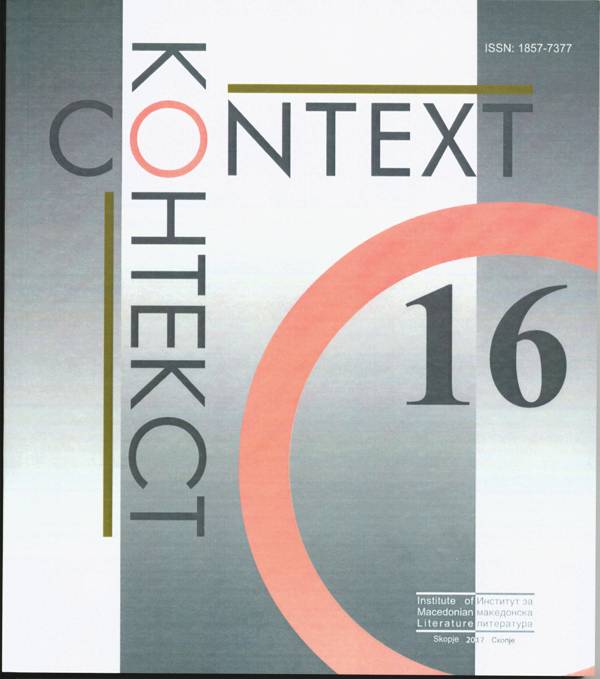
Статијата го разгледува жртвениот јарец во ритуалот за искупување во функција на прочистување од гревови и зло, преку идејата за жртва одбрана да ги понесе гревовите на колективот, протерана надвор од безбедниот свет на групата, во кој, со ритуалното искупување, повторно се враќа период на спокојство. Жртвата е раз-гледана низ миметичката теорија на Рене Жирар, преку идеите за миметичката желба, секогаш придружена со нагон за насилство, и решавањето на ескалирачките конфликти токму преку наоѓањето на заеднички „виновник“. Проблемот на одбран виновник кој е истовремено и фокусот на конфликтот и насилството, и спасител од нив, е пренесен на идејата за невина жртва врз чие страдање се гради среќата на колективот, во пламениот монолог на Иван Карамазов од Браќа Карамазови на Ф. Достоевски (хармонијата на човештвото е прескапа цена за солзите на едно измачено дете), и од расказот „Оние кои си заминуваат од Омелас“ на У. Л’Гуин.
More...
One of the most squares emperors of the Roman Empire- Trajan (Marcus UlpiusTraianus), originally from the Italian family colonized earlier in Hispany was one of the most extraordinary emperors of the Roman Empire because he had achieved the harmony between the Emperor and the people. Had taken over with the free distribution of food and wheat, money and various gifts and also with the organization of Spectacular games in the amphitheater (panem et circenses).. The overwhelming part of his 19-year-old rule, Emperor Trajan, had gone through combat campaigns and as a result expanded the boundaries of the Empire in Dacia, Arabia, Armenia and Mesopotamia, while to provide the means for combat campaigns reformed the economy by stimulate mining, agriculture, constructing the public buildings and other branches of the economy. Trajan's rule of time is characterized by the construction of the road network as well as of various public facilities in Italy and the province. In Dardania he left traces by raised the settlements of Ulpiana and Municipium DD to the rank of the Roman municipium, then he constructed various public objects (forums, temples, bridges, aqueducts, roads etc.) and stimulated the production of the earlier Dardanian mines (MetalliDardanici). It had also adapted the earliest Dardanian road network, adapting to the needs of the time and incorporating it into the network of main and suburban roads of the Empire.
More...
The article deals with factors of ethnotourism of Zhytomyr region, also it was analyzed the most important tourist-recreational and ethnic resources. It was outlined the basic priorities and prospects for development of Zhytomyr region as ethnotouristical region.
More...
The article deals with the historical genesis of views on ethnicity as a term and as substance, focusing on detailed analysis of English and French versions of the term "ethnos", examines contradictory approaches ethnological concepts L. Gumilev, and J. Bromley.
More...
The article is dedicated to investigation of functioning of the World Tree archetypal motif in the wedding rituals of Middle Naddnipryanshchina, which is completed by the author by means of comparative analysis of traditional peculiarities of “devich-vechora" celebrating, characteristic for different areas and villages of the region. The spectrum of motif manifestations is revealed through characteristic peculiarities of Naddniprianshina wedding attributes (such as towel images, traditions of "giltse" and "shabli" decoration, also song folklore), which were fixed during the field study, fulfilled by the author.
More...
In the article the questions of transformation of cultural values of the gifted personality are examined in modern society. Coming from that from positions of cultural anthropology the gifted personality can be examined as an independent value which contains intellectual and cultural potential of nation, the questions of forming of cultural values of the gifted personality are studied in the conditions of economic and social inequality, and maintainance of intellectual resources of Ukraine.
More...
Traditional clothings are integral parts of Turkish culture. They have a special place in passing on culture to next generations. Changes in technology, innovations in textile industry and mass production caused these clothes to extinct. It is possible to preserve our culture by keeping cultural values alive. For this purpose, our traditional clothing should be recorded to prevent extinction. Traditions, economic conditions and lifestyle of a region inform us about its way of dressing. In the course of time, people have made indigenous clothes by dressing in accordance with the life style, customs and the traditions of the territory. Within the scope of the research, Denizli City Çardak Providence Beylerli Town women’s shalwar were examined. Field research was conducted in Denizli City Çardak Providence Beylerli Town. In the direction of observation receipts including six woman shalwar and with the use of observation and negotiation techniques; they were investigated in terms of material, colour, form, cutting, sewing and size properties. At the end of the research on shalwar, it was revealed that printed fabric is preferred the most, they have mostly rectangular cuts and pieces are added to the crotch, the cuffs and the waist is shirred and that they do not have adornment properties.
More...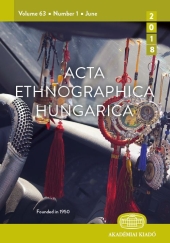
The present study examines the fate of a Greek Catholic parish in Székely Land, more specifically the inhabitants of Kostelek (Coşnea) based on the archival and anthropological field research of the author placing it within the context of the findings of earlier research on the 20th century identification struggles of Hungarian-speaking Greek Catholics in Hungary. For Greek Catholics of Ruthenian and Romanian origin assimilated to the majority Hungarians, their linguistic-national and religious identities were often incompatible during the 20th century. The problematic situations resulting from this “collision of identities” were treated by individual communities in a variety of ways, and Hungarian Greek Catholics living within changing state lines chose various identification routes. The case study presented here will demonstrate that all this, beyond the political changes, was closely related to the pastoral activity of the local priesthood and to particular local conditions.
More...
In my writing, I examine the formation and transformation of the betrothal practices of the Roman Catholic Hungarian community of Gyimes based on the results of my fieldwork research from 2005 to 2016. Betrothal came into practice in the 1980s; prior to that, ethnographic sources only mention the ritual occasion of proposal. According to Roman Catholic church norms, the ring could not be worn before the church wedding; only newlyweds were allowed to put it on their finger. For a long time, they used borrowed rings for the blessing of the rings. I explore why it was important for young couples to buy or have their own precious metal wedding rings made, despite regulations that virtually prohibited, but certainly did not support, the pre-wedding wearing of rings. Why did ring wearing and betrothal itself become fashionable? I identify the ideologies and concepts that transformed the earlier rites and views and how they contributed to the popularity of wedding ring sets and companion rings offered by jewelers. I argue that an alternative betrothal rite, the act and ideology of the Csíksomlyó ring exchange, could have greatly contributed to betrothal and ring wearing becoming a common practice in Gyimes. Until the 1990s, this was a strategy adopted by the local community which, similarly to the secular, profane passage into womanhood or emergency baptism, offered an opportunity to exit marginal life situations.
More...
This paper inquires about the social reasons and epistemological consequences of sacred knowledge (charms) outside its “original setting”, toward an archive of folklore or to a new age journal. Some local specificities of relationships between knowledge and power are explored through multiple contextualisations of an interview we conducted with a former shepherd and healer in the Carpathian Mountains, Romania.
More...
Using contemporary documents, the study presents the story of a scandalous exorcism that took place in 1726-27. At the heart of the Csíkszentgyörgy (Ciucsângeorgiu) case is the local parson and a non-local “possessed” woman. The supreme church authority sought to figure out the details of the months-long case retroactively through testimonies and the correspondence of the priests involved. The demonically possessed woman upset the entire village community. In many respects, the priest became “obsessed” with the case and the woman. For his exorcism, he used methods found in alternative European manuals that were by then banned in the Church. The woman’s prophecies and reports of the afterlife were taken seriously not only by the priest, but also by the wider village community. The sexual fervor of the woman did not leave the young men guarding her at night – as well as the parson himself – unaff ected. The Church authorities ultimately sought to clarify the circumstances of the woman’s pregnancy, and especially the priest’s role in it. Although there is no judgment to be found in church sources, all traces of the Padre later disappear. In keeping with the trends of narrative history, beyond the “thick description” of the case, the author undertakes less contextualization than usual. The case is undoubtedly edifying in terms of the history of Roman Catholic exorcism in Hungary; it presents significant documentation of contemporary religious and folk demonology, contains the early traces of subsequent folk beliefs, and raises a number of cultural-historical issues (in regard to sexuality and love).
More...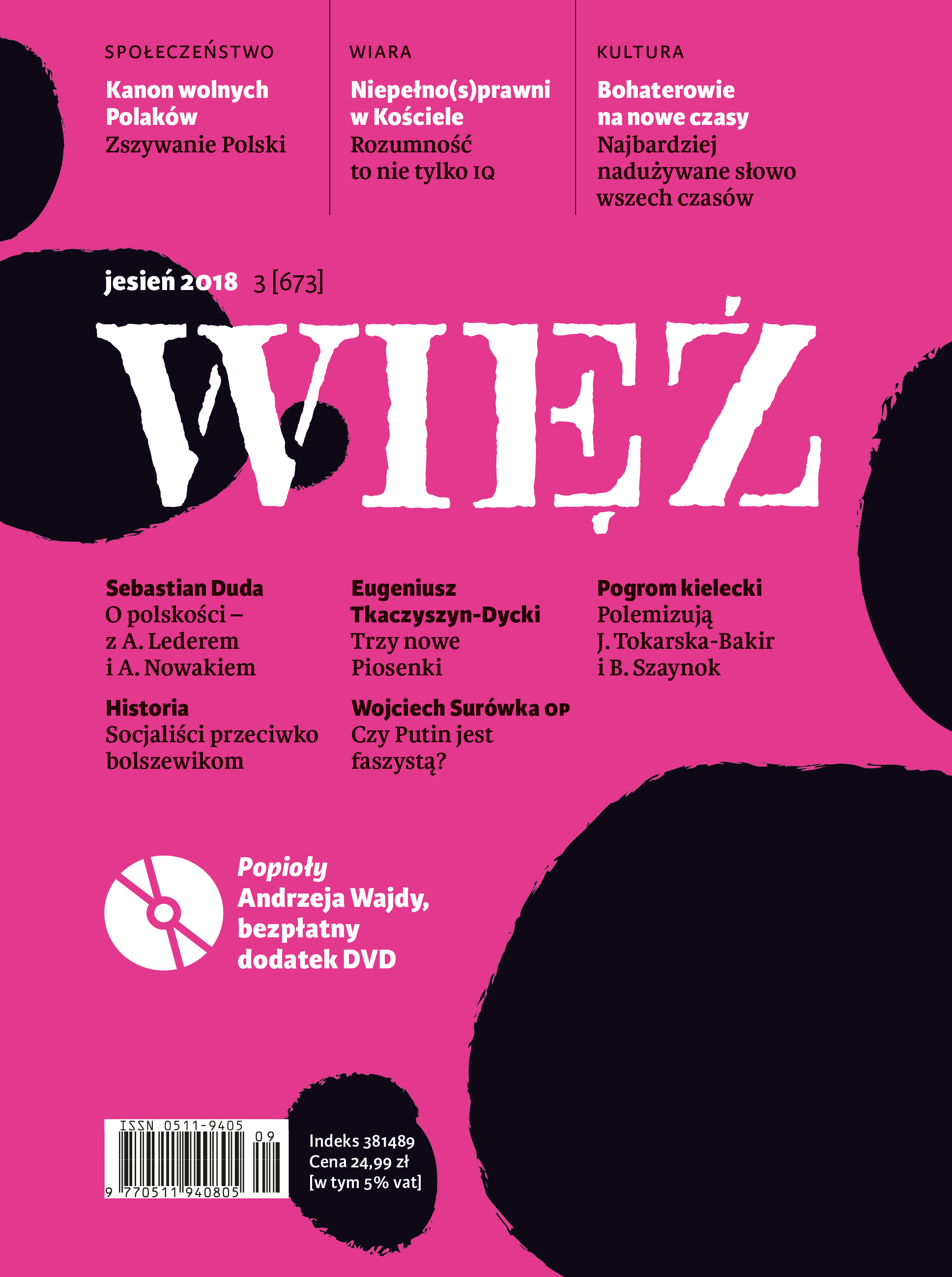
Chaos może mieć rozmaite oblicza i dlatego warto zapytać, kim są nasi dzisiejsi bohaterowie. Bo jakkolwiek wciąż przydarzają się rozmaite sytuacje ekstremalne, w których ktoś bohatersko ratuje czyjeś życie, to przecież nie ten rodzaj chaosu zagraża nam obecnie na co dzień.
More...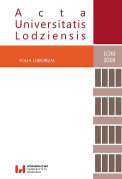
Obchodzona w 2017 roku dwusetna rocznica powołania do życia Zakładu Narodowego im. Ossolińskich (dalej: ZNiO) obfitowała w ważne wydarzenia naukowe. Uroczystym spotkaniom z ludźmi kultury i polityki towarzyszyły wystawy i publikacje przygotowane na tę okazję. Ukazały się między innymi: zbiór dokumentów ilustrujących dzieje instytucji w latach 1817–2016 Skarbiec. 200 lat Ossolineum (Markowska, 2017), Jubileusze Ossolineum. Antologia tekstów (Pękalska, 2017a), Księga darczyńców Zakładu Narodowego im. Ossolińskich (Pękalska, 2017b). Kulminację trwających od wiosny do późnej jesieni obchodów jubileuszu stanowiła Konferencja Jubileuszowa, która odbyła się we Wrocławiu w dniach 18–20 października 2017 roku. Organizatorzy za cel spotkania ludzi nauki przyjęli zaprezentowanie różnorodnej problematyki dotyczącej dziejów ZNiO oraz innych polskich instytucji kultury powstających w okresie od likwidacji państwa polsko-litewskiego do czasów współczesnych.
More...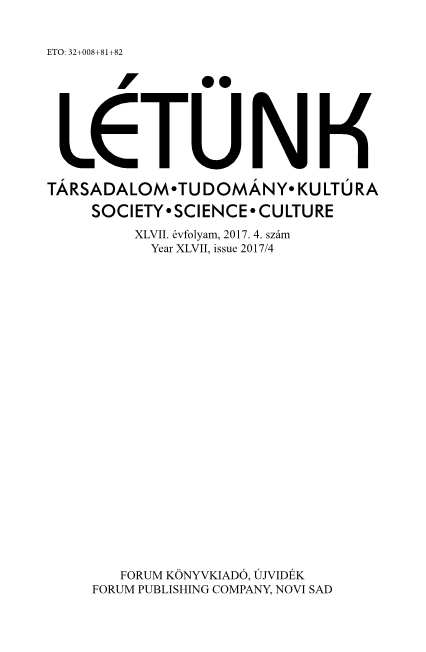
Jászkunság – A Jász-Nagykun-Szolnok Megyei Tudományos Egyesület évkönyve, 5. kötet, Szolnok, 2017
More...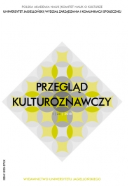
Review of: Małgorzata Lisowska-Magdziarz, "Fandom dla początkujących. Część I: Społeczność i wiedza" Instytut Dziennikarstwa, Mediów i Komunikacji Społecznej, Uniwersytet Jagielloński, Kraków 2017, ss. 190. by: Tomasz Żaglewski
More...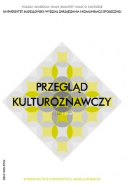
In this essay the author claims that if one is defined in terms of a mobile army of cultures, then one will turn to be possibly a flexible and innovative creature. The very expression “a mobile army” is borrowed from F. Nietzsche but it is the author who associates this expression with a word “culture”. Culture is taken to be a set of attitudes, like belief, intention, or solidarity, which are of mental yet intersubjective nature. On the other hand, one is a part of a realm of physical events where one’s actions are an instance of such events. Some of one’s actions are non-reflexive since they are conditioned by the sets in question. Still, such sets emerge as a result of one’s entering into a series of interactions with, among others, other non-reflexively acting actors. There exits then a feedback between attitudes and actions (events). Culture is an orientation system, and a series of interactions makes one change it, where a change amounts to a reconfiguration of attitudes due to temporary tensions among them. In this respect one not only is modelled by the reality of physical events (actions) but also models it. Since there is more than one agent with such a capacity, an army of cultures can be imagined. Moreover, such an army is attributed a characteristic of mobility. In this respect, when acting non-reflexively one faces a mobile army of cultures where one’s culture is temporarily a part of this army.
More...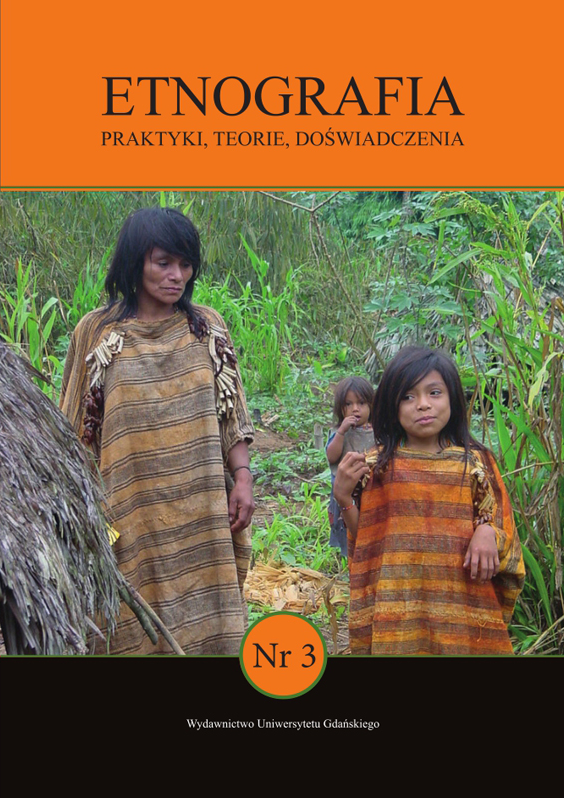
Review of: Adam Pisarek, "Gościnność polska. O kulturowych konkretyzacjach idei" Katowice: grupa kulturalna.pl, 2016, ss. 264 by: Anna Gańko
More...